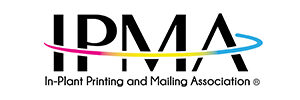Running an in-plant mail operation can feel like managing controlled chaos—juggling legacy systems, outdated processes and job-specific workflows. Operations are complex, margins are tight and your teams are stretched thin. Sound familiar? If so, you’re not alone.
Managing disparate, job-specific workflows only adds to the burden, especially when rising costs and limited resources are already stretching your teams. These siloed environments require significant manual intervention and rely heavily on institutional or tribal knowledge. It’s a risky, costly and unsustainable way to operate.
Ask yourself:
- How many different workflows does your team manage daily?
- Are the manual interventions causing issues with your SLAs? And if so, how much is that costing you?
- How long does it take to onboard a new job—or a new employee?
- What happens if your most experienced operator walks out the door?
The reality is that many operations do an incredible job just to keep the wheels turning. But has “business as usual” become more like treading water than making real progress?
The Hidden Costs of Sticking with the Status Quo
When processes have always been done a certain way, it’s easy to overlook the toll they may be taking on your operation:
- Loss of critical knowledge: When experienced staff leave, they often take years of specialized expertise with them—putting your operation at risk.
- Built-in inefficiencies: Siloed, manual workflows waste valuable time, drive up costs and increase the risk of errors.
- Compliance vulnerabilities: Manual processes increase the chance of mistakes, rework and potentially costly data breaches.
- Operational strain: Disconnected systems require more support and contribute to frequent delays and increased frustrations.
- Limited flexibility: Without scalable workflows, you’re stuck, unable to take on more work or adapt to changing needs.
If you’re still managing dozens of job-specific workflows through a sleek, new interface, the real problem hasn’t been solved.
Now Imagine the Alternative
What if you could rewrite the playbook? What if instead of customizing workflows for every client, job or output channel, you ran everything through a single, intelligent, standardized workflow? That’s the power of workflow normalization.
Workflow normalization is a smart approach to document processing—one that leverages AI and data intelligence to simplify, consolidate and automate. It turns your print files into data-driven assets that power fully automated workflows from post-composition through to delivery.
Here’s what that looks like:
- Reduce hundreds of workflows to a manageable few.
- Consolidate short runs into longer, more efficient production batches.
- Automate inserter setup, postal optimization and job routing.
- Onboard jobs in minutes, not days.
- Reduce reliance on IT, specialized operators and tribal knowledge.
- Free up your skilled team to focus on high-value tasks and onboarding new business.
In other words, normalization reduces friction, amplifies output and future-proofs your operation.
Real Operations, Real Results
Here’s how organizations are transforming operations:
- Cut turnaround by 80%: One provider slashed job completion times from seven days to 36 hours while eliminating manual touchpoints and boosting quality.
- 40% more work, same resources: With normalized workflows, another team handled significantly more volume without adding staff or systems.
- Simplified operations: A large mailer reduced daily jobs from 85+ to under 12, standardized setups and consolidated operations, cutting overtime by 85%.
- Modernized from legacy systems: One group went from 18 legacy workflows to just 3, streamlining onboarding and integrating with ERP and inventory systems for better control.
The New Playbook for Smarter Operations
The future of in-plant efficiency lies in intelligent workflows, where every mailpiece is a smart, trackable cost-efficient asset. Data normalization isn’t just a technical upgrade; it’s a strategic shift that brings clarity, consistency and control to your operation.
And here’s the good news: You don’t need to start from scratch. Workflow normalization makes your existing infrastructure work smarter, unlocking hidden capacity, reducing risk and putting your team in a better position to scale and deliver more value.
Because when your data flows smoothly, everything else does too.
Discover how workflow normalization can simplify your operations, lower costs and give your team room to thrive. Come visit the Crawford Technologies team at the IPMA 2025 Educational Conference where we will be showcasing our intelligent workflow solutions.

A digital document industry pioneer, Ernie Crawford is President/CEO and founder of Crawford Technologies. One of only a small number of people worldwide with M-EDP (Master Electronic Document Professional) designation, Ernie has more than 30 years of senior marketing and management experience in the high-volume digital printing market.
